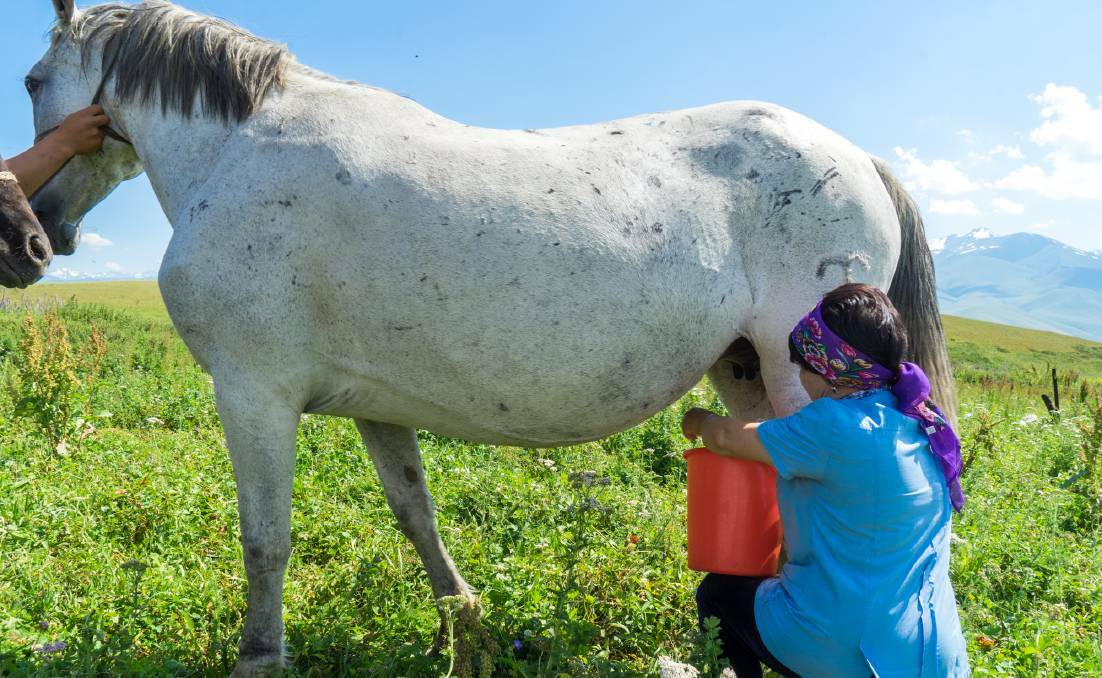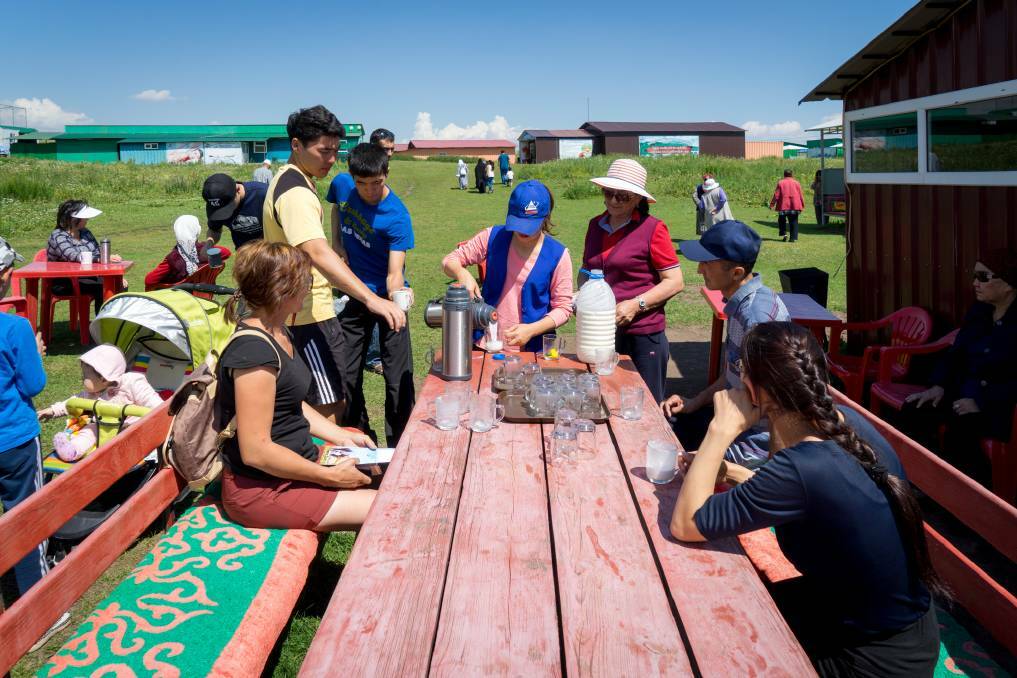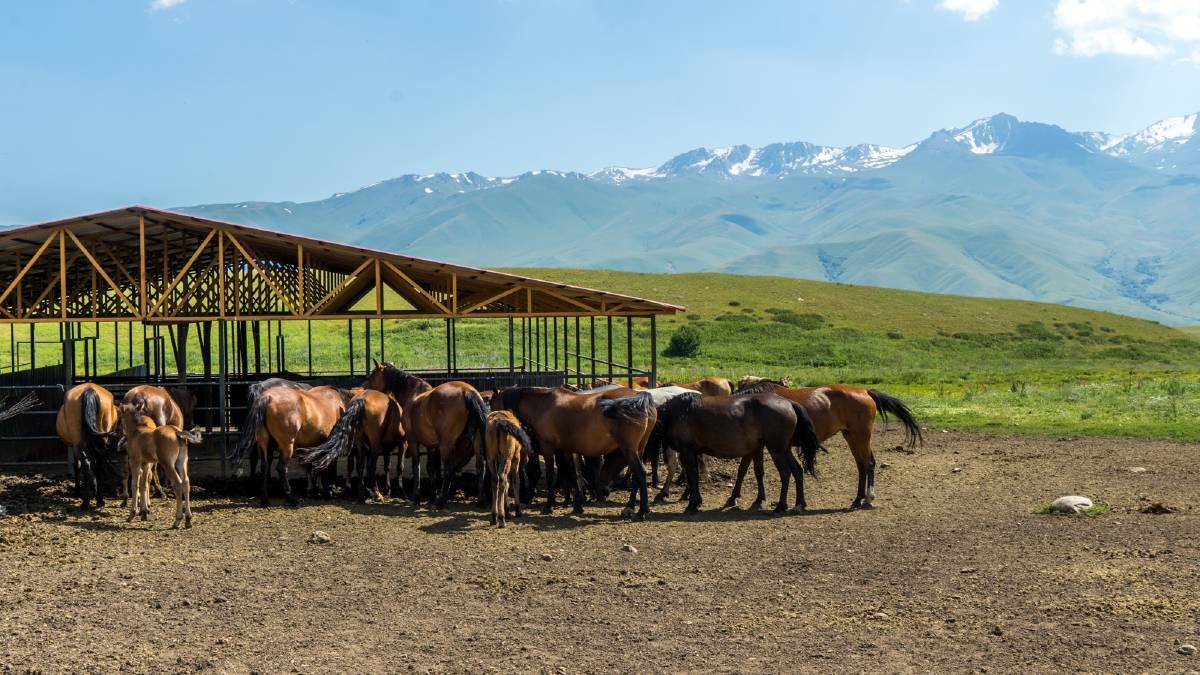As I get ready to take my first sip, I’m slightly nervous about what it’s going to taste like. The white milk in my glass looks relatively normal, except maybe for a few more bubbles than usual. But I’m a bit apprehensive because I’ve just seen where it came from.
Create a free account to read this article
$0/
(min cost $0)
or signup to continue reading
In a large shed a few metres away, a young man has just milked a horse, poured the liquid into a bucket, and then poured it into my glass.
Yes, that’s right. A horse.
Here in Kyrgyzstan, this is not unusual. The country’s history and culture are inextricably intertwined with horses – they’ve been transport, labour, weapons, and even food, for centuries. They are part of the national identity and a Kyrgyz friend tells me one day that they refer to horses as “the wings of man”.

In fact, they are such an important part of tradition that this farm has been set up just so people can come here and drink the fresh horse milk. For me, it’s a bit of a novelty. For the locals, it has a deeper meaning.
I start to drink, small sips at first. I’m pleasantly surprised. It’s warm and tastes lighter than the cow milk I’m used to. Even a bit sweeter. It’s as though someone has taken skim milk and put a bit of sugar in it. Although I continue to just sip from my glass, I am actually enjoying it. But I have no inclination to just gulp everything down quickly.
That’s what the others around me are doing, though. There are at least a dozen people here from Kyrgyzstan and neighbouring countries who have come for the horse milk and are happily gulping from their cups. And they’re not here for just one drink. They have come for a few days, a week, maybe even a fortnight.

Because this horse farm, called Baytur, is essentially a health retreat. There’s an accommodation section with different styles of rooms (from dorm, to private, to family yurt) and guests stay here over an extended period to regularly drink the horse milk.
The animals are milked five times a day and fresh milk is then served directly afterwards. Most people will wander down from their rooms to the outdoor seating area for a glass every time.
I’m pleasantly surprised. It’s warm and tastes lighter than the cow milk I’m used to. Even a bit sweeter.
When I arrive, I am given a brochure that explains the health benefits of the milk. Reading it, I get the sense that the drink can apparently help with almost anything. Apparently it influences the nervous system to treat chronic fatigue and avoid depression; it strengthens the gut to improve digestion; it cures or prevents respiratory illnesses; it enhances the liver; it’s good for the skin; it lowers cholesterol; and it helps with blood conditions like anaemia.
I take the words like ‘cure’ and ‘prevent’ with a little scepticism but there’s no doubt that our bodies can benefit from what we eat and drink. When it comes to horse milk, this is not a new fad. This is something that has been done for hundreds of years and modern research has supported some of the claims.
The Baytur resort is a relaxing environment to come for treatment like this. It’s not far from the main highway between Bishkek and Osh but it’s hidden behind a hill that keeps the noise away. Like most of Kyrgyzstan in summer, there are dramatic snow-capped mountains on the horizon but lush green fields down on the plain.
The woman who looks after the horses shows me around a bit. There are more than 50 horses here, so they milk them in a typical farming shed using a machine designed for cows that they imported from Germany. But she also demonstrates for me how it is done traditionally, wrapping her arm around the horse’s back legs in a way that will prevent her from being kicked. They also have a foal there to encourage the milk flow.

I’m also shown the room where they make the ‘kymyz’, also an important part of the local culture and another reason people come here. Kymyz is fermented horse milk that has become slightly alcoholic. Right after milking, the liquid is put into a container made from leathered horse skin and yeast is added. It then has to be regularly stirred. By the time it’s served, the alcohol content is normally about 3 per cent.
I’m offered a glass and, again, I sip cautiously. It has a very different flavour to the fresh milk. I can taste the fermentation but not the alcohol – it’s thicker and a bit more bitter. This is certainly one that I’ll need to take slowly.
But there’s no rush here. Kyrgyzstan is a country that is used to taking things slowly, where caravans once passed through on their Silk Road journeys and, even today, trips are taken on horseback across the mountains with no sense of urgency.
To spend a couple of weeks at a health retreat drinking milk five times a day is not such a strange idea. And if you add in a few glasses of the alcoholic kymyz, it might even feel like a holiday.




